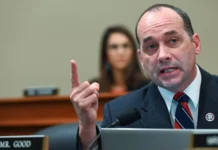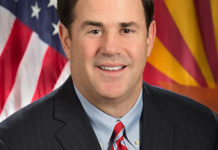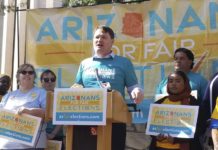
By Bethany Blankley | The Center Square contributor
In the wake of Tucson Sector Border Patrol agents being slammed with a surge of illegal border crossers, some in the media appear to be incorrectly reporting standard procedure, which experts on the ground and critics argue is unfounded.
Tucson Sector Border Patrol agents have not only been dealing with surges for three years but also did in previous administrations. Pulling agents from other stations or from the field is not new. It’s a practice that happens nationwide, especially in Texas, which has historically reported the largest surges in U.S. history, current and retired Border Patrol agents have explained to The Center Square.
During Thanksgiving week, Tucson Sector Chief John Modlin reported that Border Patrol agents apprehended 15,300 illegal border crossers, seized 117 pounds of fentanyl, were involved with 78 federal criminal cases, performed 17 rescues of stranded migrants, stopped 14 human smuggling events and three narcotics events. On Saturday, agents apprehended armed smugglers wearing camouflage.
The Tucson Sector, which spans 262 miles from the Yuma County line to the Arizona-New Mexico state line, is the busiest of the two sectors in Arizona. Tucson Sector agents reported the third-highest number of illegal entries along the southwest border, behind the top two sectors of El Paso and Del Rio in Texas in fiscal 2023.
Tucson Border Patrol agents apprehended 373,625 people and reported at least 185,866 gotaways last fiscal year, The Center Square first reported.
In response to the recent surge, one foundation reported “reinforcements” were called up from the Douglas station in Arizona to provide “processing and transportation support.” Another outlet claimed the surge caused the sector to cancel field patrols.
On Sunday, Modlin announced, “In light of the ongoing migration surge, all Tucson Sector Border Patrol social media accounts will be temporarily reduced to maximize our available staffing in support of our current operational challenges. We will continue to post our Week in Review statistics, demonstrating the continued efforts of our agents and staff. At this time, all available personnel are needed to address the unprecedented flow. The social media team will return once the situation permits.”
He then quickly added, “Apologies for my earlier hastily written statement. To be clear, it is my intention to remain transparent.” In response, some on social media criticized him, implying he wasn’t being transparent.
However, officials familiar with Border Patrol operations explain that when surges occur, agents are pulled from the field or from other operations they might be assigned to in order to respond. If agents are on external detail, they are called to return to their initial duty station to help with the surge, a Border Patrol agent in Texas explained to The Center Square. “This has happened a lot in the Rio Grande Valley, Del Rio, and El Paso sectors, including under the Trump and Obama administrations,” the agent said, speaking on condition of anonymity for fear of reprisal.
“Specialty teams in the field are taken off of rotation to address migration flow,” the agent added. “It’s normal for agents in Douglas to process in Tucson. There are air marshals, and agents from the northern border who are pulled to respond to surges at the southwest border at different times.”
“People just want to create outrage on social media but they don’t want to look back in time to see what we’ve done in the past,” the agent said. “Border Patrol agents are put in a terrible situation, you’re constitutionally told to secure the nation and constantly battling in your mind with what DHS [Department of Homeland Security] deems as a priority, releasing people into the country. It’s mentally and emotionally challenging. Agents still go to work knowing this and are constantly accused of being traitors.”
Jobe Dickinson, president of Arizona-based Border Security Alliance, told The Center Square that Modlin has “done a really great job keeping people up to date. When the Biden administration has been less than forthcoming in admitting there is a problem at the border, this chief has continued to report data and facts about the great work Border Patrol agents are doing 24/7, 365 days of the year.”
“Moving personnel and resources is nothing new,” Terrell County, Texas, Sheriff Thad Cleveland told The Center Square. Cleveland, a retired Border Patrol agent who served in Arizona for years, said of his time working in Arizona, “We used to bring people in from California and Texas to assist us on detail to deal with the influx of people.”
Taking agents out of the field is not new, he added. During the recent influx in Eagle Pass, Texas, earlier this year, the phenomenon occurred, Cleveland said. Illegal border crossers were sent to a Border Patrol station in Comstack, Texas. Every agent was taken out of the field so they could process hundreds of people at a time.
“This left 81 miles of border open,” Cleveland said. In Terrell County, a few hours west, “we saw reduction in activity because smuggling operations moved when agents were pulled out of the field east of us.”
Cleveland, who knows Modlin, said he “has always been transparent and isn’t doing anything to hide the current situation in Tucson Sector. They are simply overwhelmed, and there may be influence from DHS to reduce the amount of information coming from Tucson.
“The shifting of resources is something Border Patrol has done for many years. We’ve always used resources from neighboring stations or other sectors to assist with the overwhelming activity another station may be experiencing.”
Republished with the permission of The Center Square.













